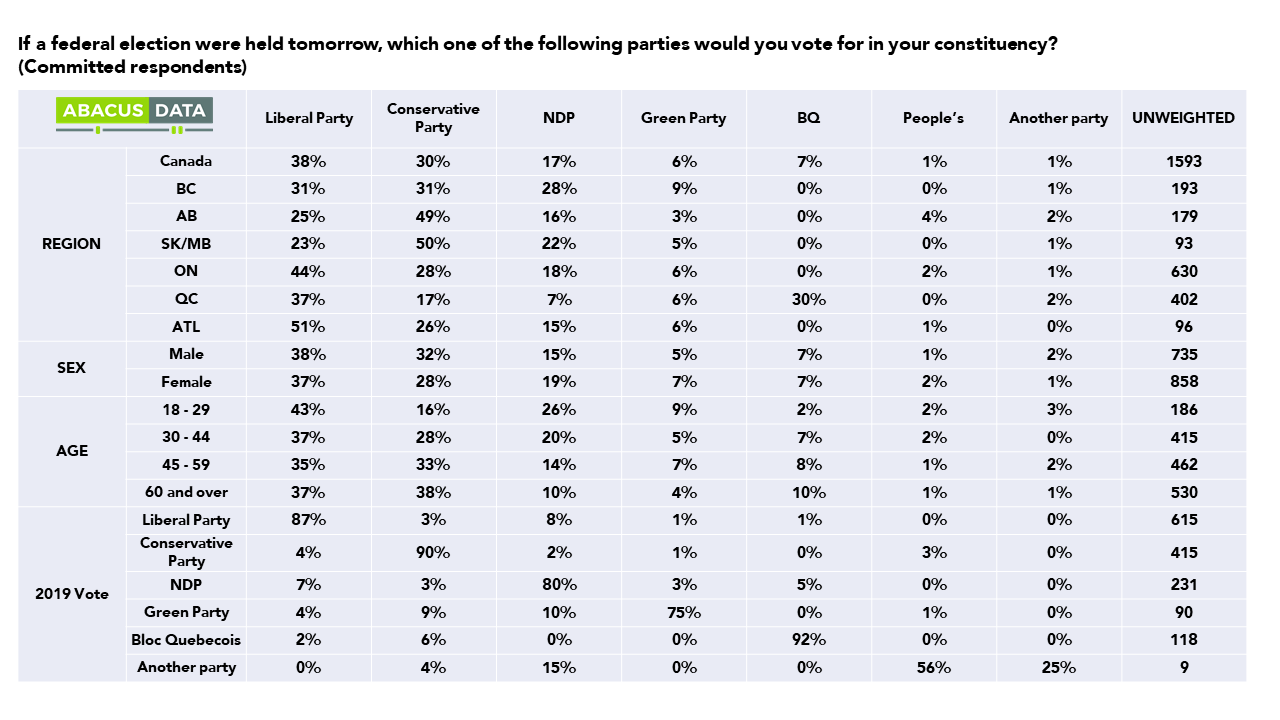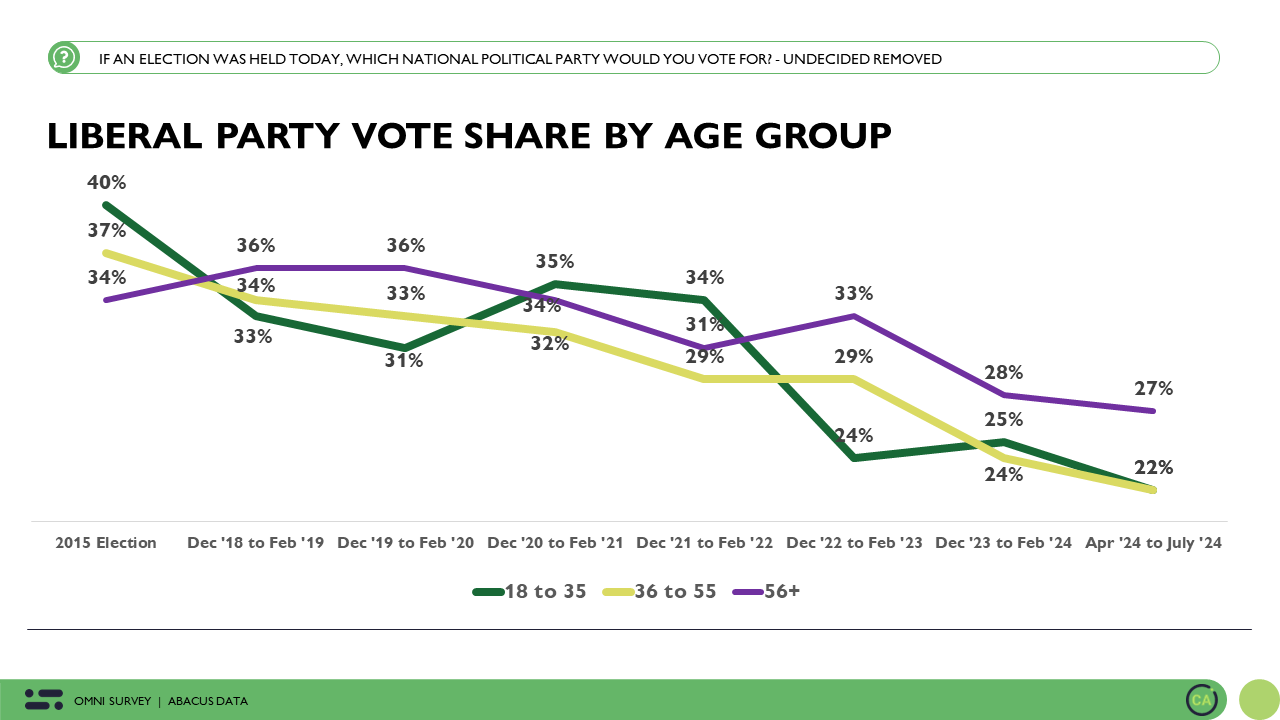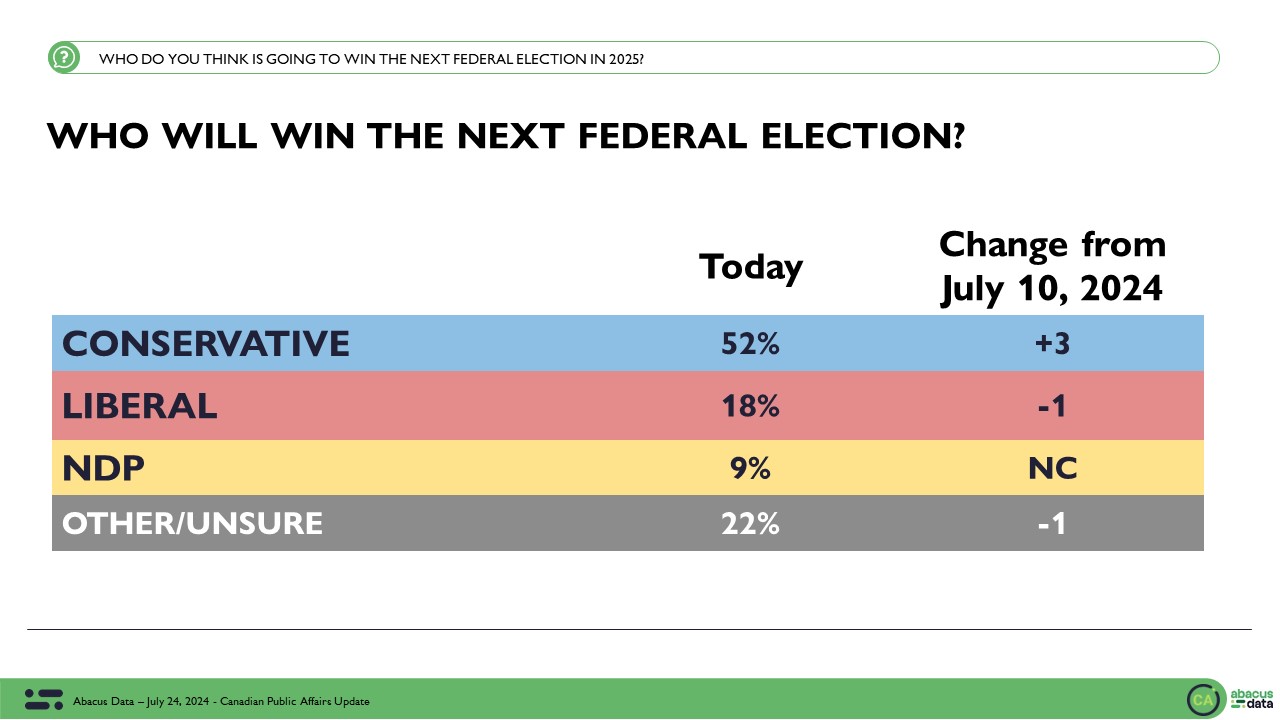Liberals open up an 8-point lead over the Conservatives as O’Toole’s negatives keep rising
April 1, 2021
Listen to David Coletto’s new podcast inFocus with David Coletto
We just completed a national survey of 2,000 Canadian adults (from March 25 to 30). Here’s what the survey found:
CURRENT VOTING INTENTION
If an election were held now, the Liberals would win 38% of the vote (up 5 from our last wave), the Conservatives 30%, the NDP 17% (down 2), the Green Party 6% (down 2) and the BQ at 30% in Quebec (up 3). This is the largest lead for the Liberals in our tracking since mid-November 2020.
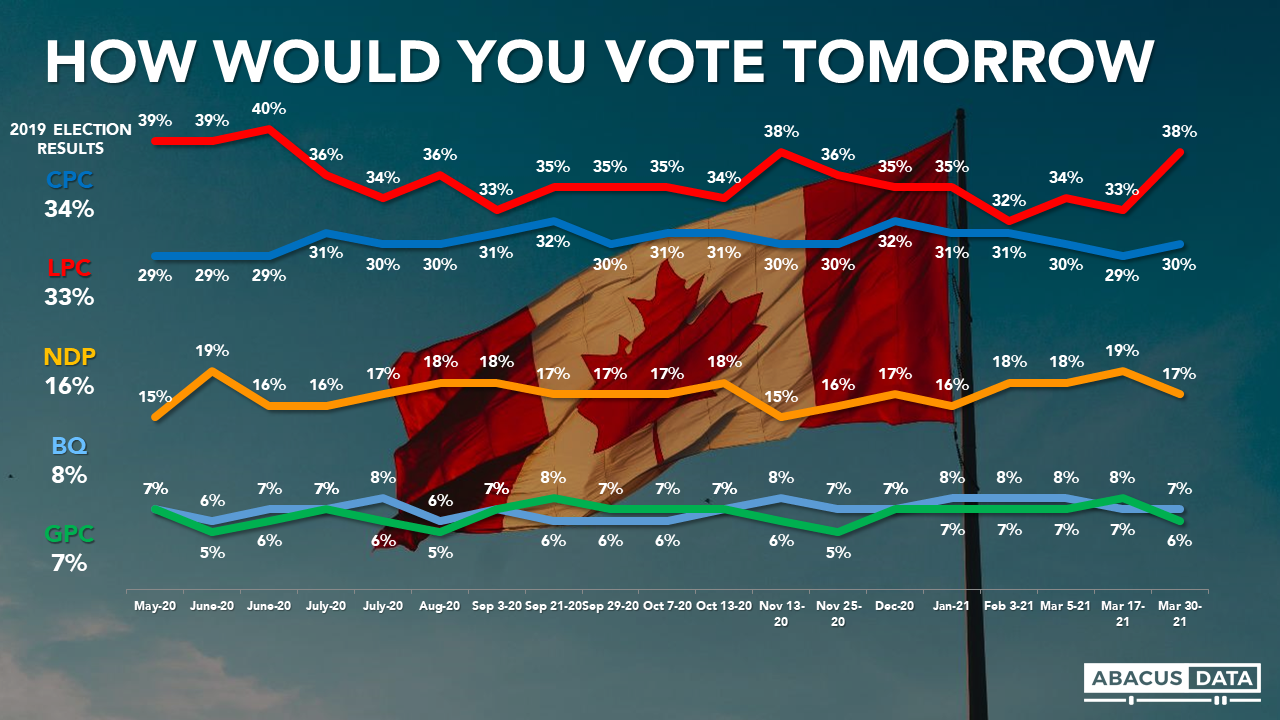
Regionally, we continue to see a tight three-way race in BC, wide leads for the Conservatives in the Prairies, a 16-point lead for the Liberals in Ontario, a 7-point lead for the Liberals over the BQ in Quebec, and a 25-point lead for the Liberals in Atlantic Canada.

LEADER IMPRESSIONS
Justin Trudeau enjoys a positive impression among 39% and finds negative impressions among 40%, for a net score of -1. His net score is -3 in BC, -23 in Alberta, +5 in Ontario, +6 in Quebec and +22 in Atlantic Canada.
Erin O’Toole enjoys a positive impression among 19% and finds negative impressions among 33%, for a net score of -14 and the worst rating we have registered since we started tracking. His net score is -14 in BC, +8 in Alberta, -20 in Ontario, -16 in Quebec and -25 in Atlantic Canada.

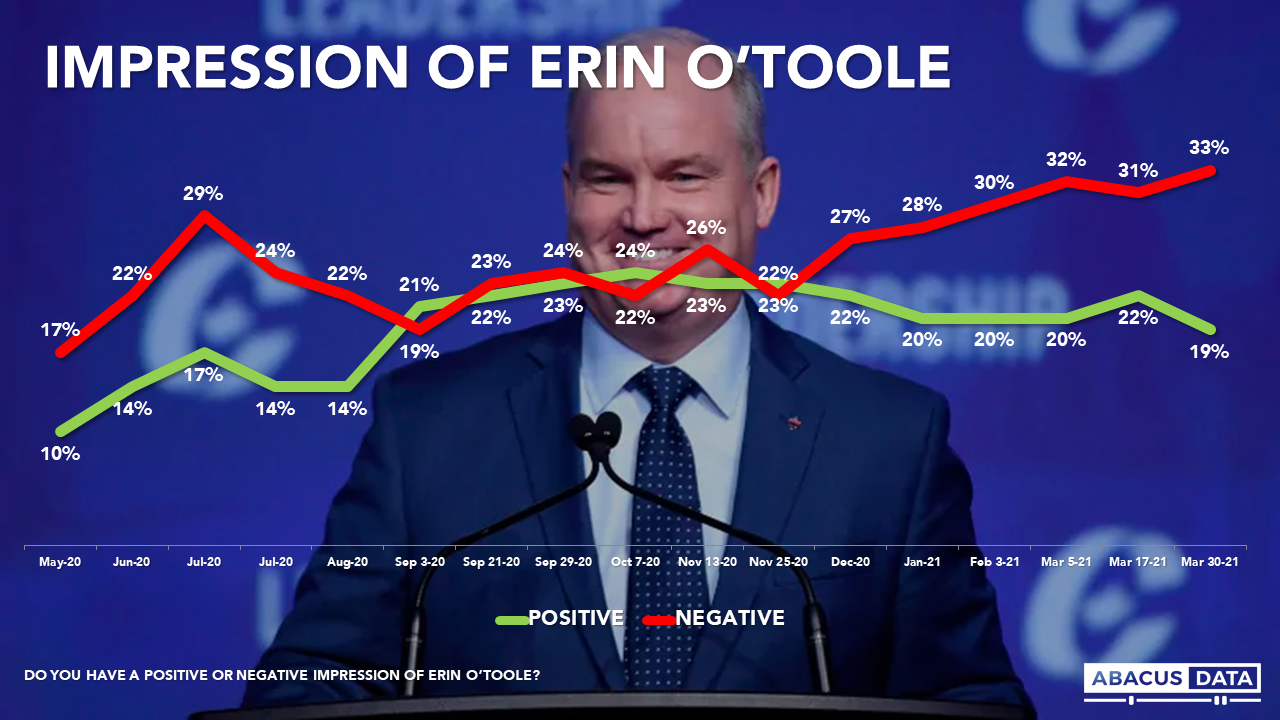
Given the rise in Mr. O’Toole’s negatives, we compared net impressions by key groups today with where his net impression was the month after he was elected Conservative Party leader. The most noteworthy swings have been in Ontario (-2 to -20), BC (+1 to -16), and among those 45 and older (from +6 to -16). Mr. O’Toole has lost popularity among those who self-identify as being on the left (a 15 point drop), centre (an 11 point drop), and right (14 point drop) of the spectrum.
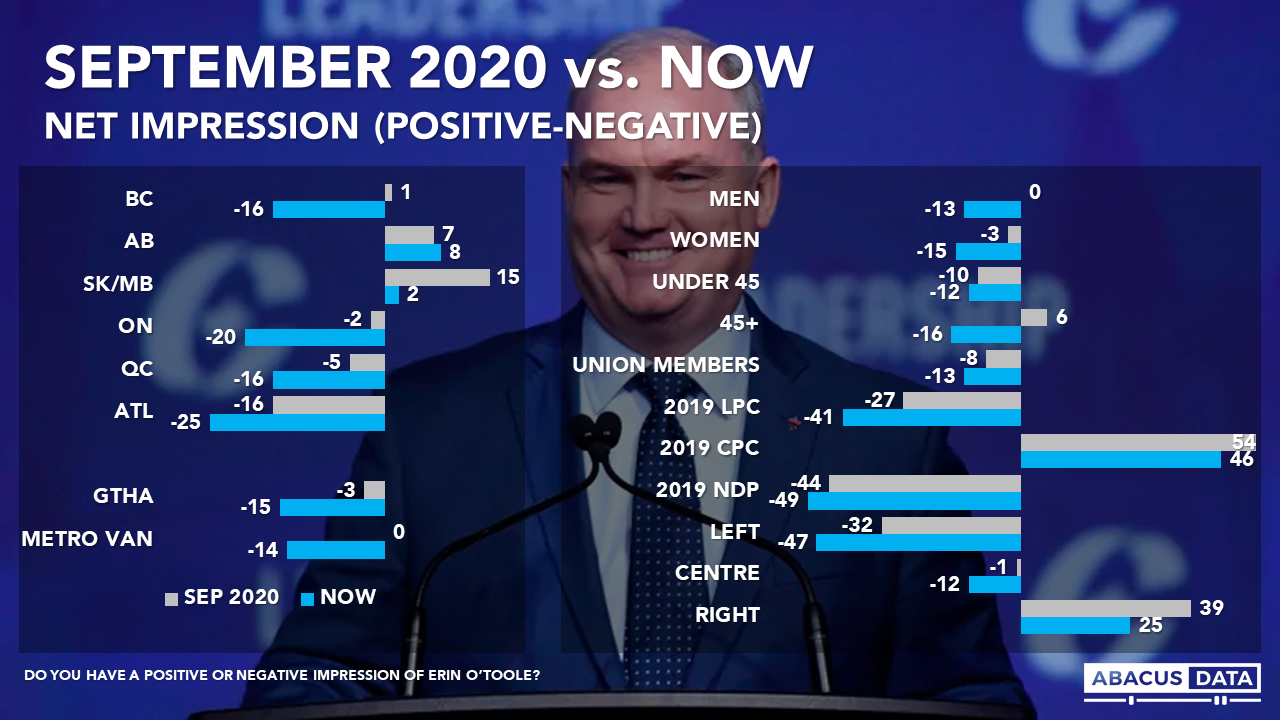
Jagmeet Singh enjoys a positive impression among 33% and finds negative impressions among 24% for a net +9. His net score is +17 in BC, 0 in Alberta, +14 in Ontario, 0 in Quebec and +16 in Atlantic Canada.

DESIRE FOR CHANGE
A total of 37% say it’s definitely time for a change, 15 points lower than at the end of the 2019 campaign. Another 28% say “it would be good to have change but doesn’t matter to me that much”, which is 9 points higher than at the time of the last election. In total, 35% say they prefer the Liberals to be re-elected, 4-points higher than at the end of the 2019 election campaign.
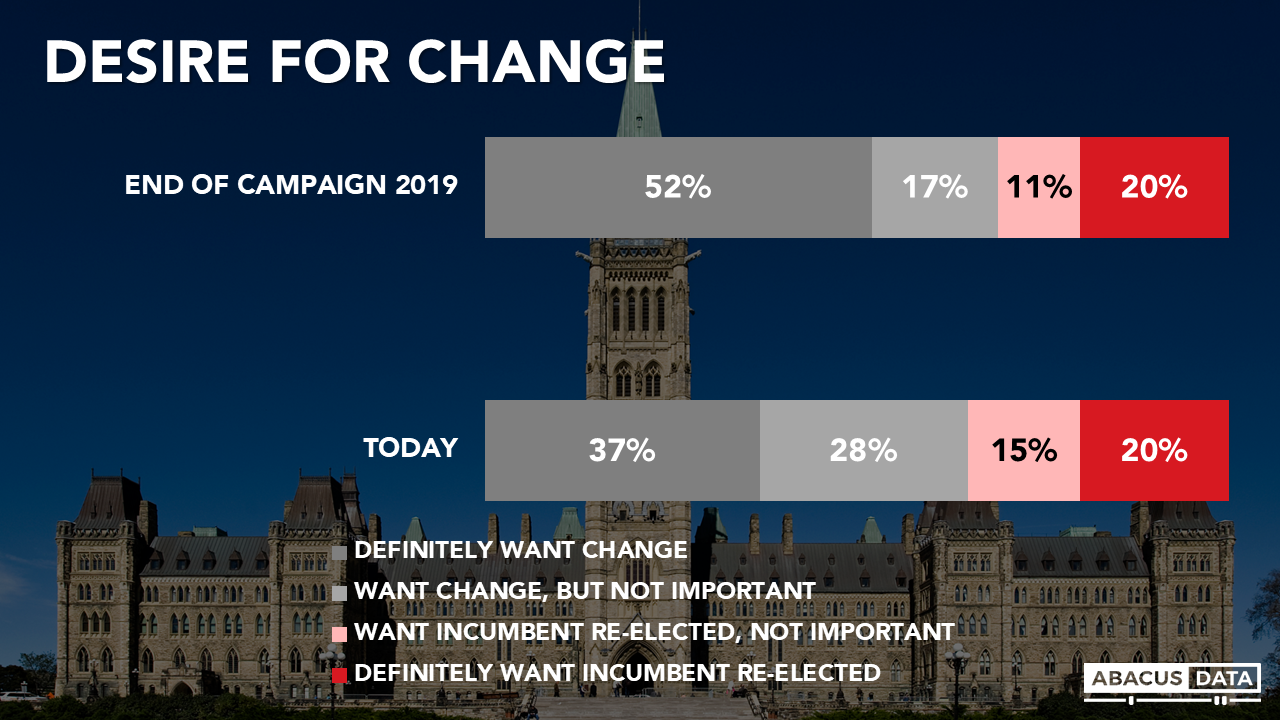
FEELINGS ABOUT THE PANDEMIC
We find concern about the pandemic is growing again, even as vaccines arrive in larger quantities. One in three (34%) say over the past few days they have become more worried (up 9 since early March) while 17% say they are less worried (down 3). Regionally, there isn’t much variation except in Atlantic Canada where residents are less likely to report rising fear.
There also isn’t much variation by current party support. At least 30% of Liberal, Conservative, NDP, Green, and BQ supporters say they are getting more worried about the pandemic.
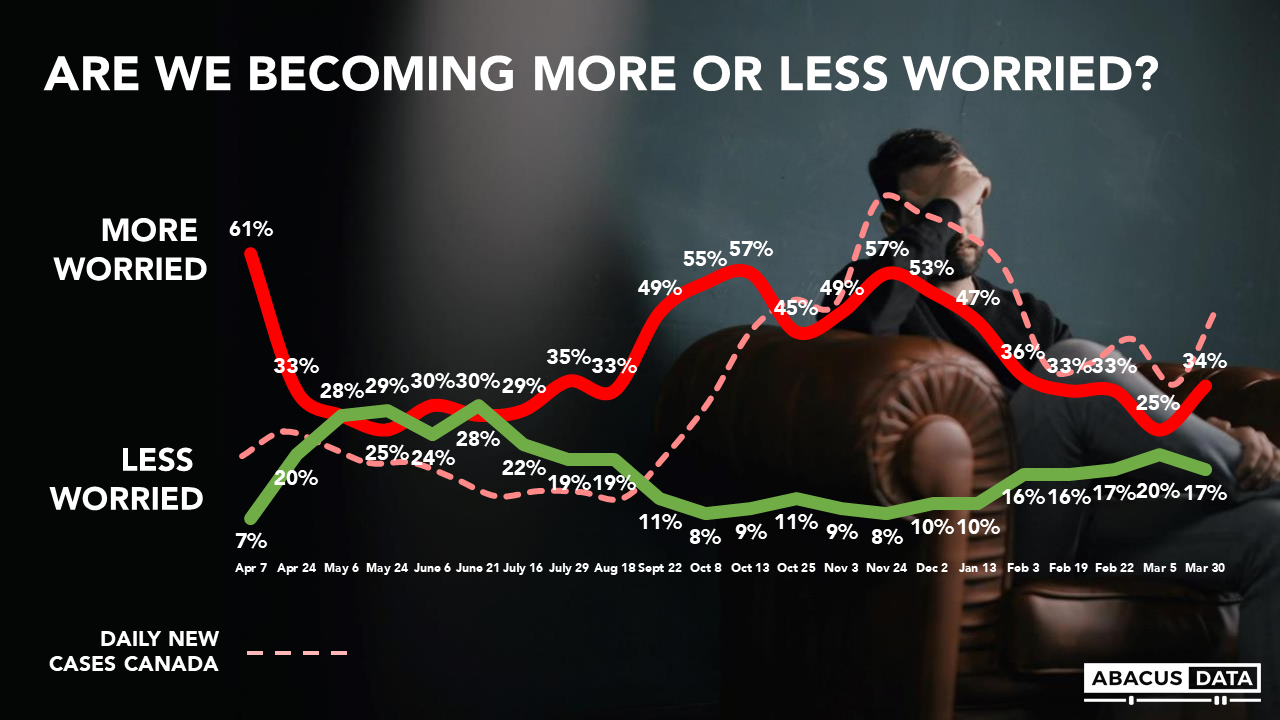
UPSHOT
According to Bruce Anderson: “It may not be a coincidence that Liberal support is up at the same time as more vaccines are arriving in Canada – it’s too early to tell what the effect will be of this new phase of the pandemic. Having said that, it’s clear that the pandemic is the major preoccupation for people and it’s likely that more people are starting to imagine a post-pandemic reality, even if there is plenty of near-term anxiety about variants of concern.
The Conservatives might have hoped for a bounce coming out of their policy conference and instead the challenge for Erin O’Toole is probably a bit worse than it was heading into that event. There are a considerably fewer motivated Conservative voters than there were in 2019 and he personally has been losing ground across the spectrum, probably his most notable challenge being in BC and Ontario, and also among Conservatives who are less enthusiastic about him than when he was first elected as leader.
According to David Coletto: “The Liberals have opened up the largest lead since October 2020 with critical advantages in Ontario and Quebec. Erin O’Toole continues to struggle to connect with Canadians as his negatives continue to rise.
The Liberals are now the clear favourites: they have a sizeable lead in the horserace, the desire for change remains much more muted than back in 2019, and none of the opposition parties are gaining any traction.
Although the Liberals would likely win a majority if an election held today, rising anxiety about the pandemic and a third wave would make calling a spring election risky and challenging for the Liberals to navigate. For the opposition parties, there’s little here to entice them to bring down the government over the federal budget which means if the parties are basing decisions on the public mood, we won’t see an election until at least later this year.”
And don’t miss any of our research and analysis, plus get our weekly Worth A Look newsletter. Sign up today.
ABOUT ABACUS DATA
We are the only research and strategy firm that helps organizations respond to the disruptive risks and opportunities in a world where demographics and technology are changing more quickly than ever.
Find out more about what we are doing to help clients respond to the COVID-19 pandemic.
We are an innovative, fast-growing public opinion and marketing research consultancy. We use the latest technology, sound science, and deep experience to generate top-flight research-based advice to our clients. We offer global research capacity with a strong focus on customer service, attention to detail and exceptional value.
We were one of the most accurate pollsters conducting research during the 2019 Canadian Election.
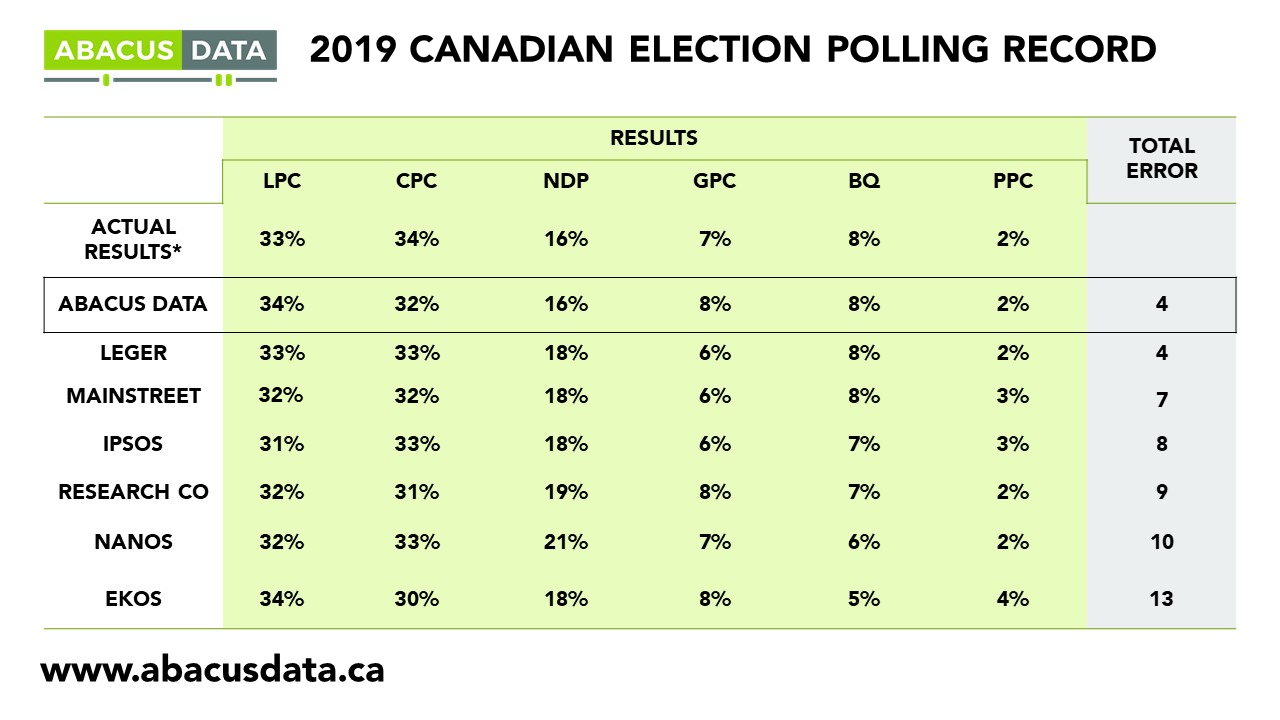
Contact us with any questions.
Find out more about how we can help your organization by downloading our corporate profile and service offering.
METHODOLOGY
The survey was conducted with 2,000 Canadian adults from March 25 to 30 2021. A random sample of panelists were invited to complete the survey from a set of partner panels based on the Lucid exchange platform. These partners are typically double opt-in survey panels, blended to manage out potential skews in the data from a single source.
The margin of error for a comparable probability-based random sample of the same size is +/- 2.1%, 19 times out of 20.
The data were weighted according to census data to ensure that the sample matched Canada’s population according to age, gender, educational attainment, and region. Totals may not add up to 100 due to rounding.
